标签:处理 eset back else app pen offset bit 识别
预备实现功能:
1、读取bmp文件
2、保存bmp文件
3、对bmp图片进行放大、缩小
4、对bmp图片进行灰度化
5、对bmp图片进行旋转
bmp文件格式非常简单,对于我这种初学者来说减少了不少不必要麻烦,故选择写一个处理bmp格式的工具。因为之前自学python一直没有动手,所以语言选择python。
第一步、熟悉bmp文件格式,完成bmp文件的解析、生成
参考了如下博客
1、http://blog.csdn.net/lanbing510/article/details/8176231
2、http://blog.csdn.net/jemenchen/article/details/52658476
根据上面的博客,了解了基本的bmp文件格式,bmp文件可以简单的分为:
1、文件信息头
2、位图信息头
3、调色板
4、像素信息
因为现在的bmp图片一般都没有调色板信息(因为24位),所以忽略第三个。所以bmp文件一般的头部信息(包括文件信息头和位图信息图)总共占用54个字节
使用16进制查看器打开一张bmp格式图片,我们可以看到如下信息
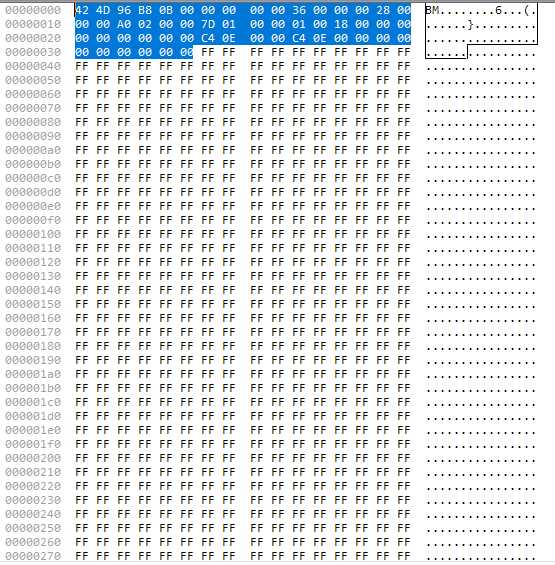
图1 bmp文件
图中蓝色部分就是bmp文件的头部信息,后面的FF为像素数据。可以看到,头部信息总共有54个字节(不包括调色板),具体这些数据由什么组成,可以查看上述的参考博文。
所以现在我们的思路就非常清晰,读取文件的头部信息后,在读取文件的位图数据,即可完成对bmp文件的解析。
所以我们构造了如下的类
文件信息头类
class BmpFileHeader: def __init__(self): self.bfType = i_to_bytes(0, 2) # 0x4d42 对应BM self.bfSize = i_to_bytes(0, 4) # file size self.bfReserved1 = i_to_bytes(0, 2) self.bfReserved2 = i_to_bytes(0, 2) self.bfOffBits = i_to_bytes(0, 4) # header info offset
位图信息头
class BmpStructHeader: def __init__(self): self.biSize = i_to_bytes(0, 4) # bmpheader size self.biWidth = i_to_bytes(0, 4) self.biHeight = i_to_bytes(0, 4) self.biPlanes = i_to_bytes(0, 2) # default 1 self.biBitCount = i_to_bytes(0, 2) # one pixel occupy how many bits self.biCompression = i_to_bytes(0, 4) self.biSizeImage = i_to_bytes(0, 4) self.biXPelsPerMeter = i_to_bytes(0, 4) self.biYPelsPerMeter = i_to_bytes(0, 4) self.biClrUsed = i_to_bytes(0, 4) self.biClrImportant = i_to_bytes(0, 4)
bmp类至少应该有三个信息:
在拥有了上述信息后,下面的事情就变得非常简单,只需要去读取文件,并按照bmp的格式构造出头部信息,位图数据即可完成bmp的解析
解析过程中,我们要注意数据的大小端问题
我们读取、写入数据要以小段模式(这个有点容易混淆,我可能解释的也有点不清楚)
bmp类
class Bmp(BmpFileHeader, BmpStructHeader): def __init__(self): BmpFileHeader.__init__(self) BmpStructHeader.__init__(self) self.__bitSize = 0 # pixels size self.bits = [] # pixel array @property def width(self): return bytes_to_i(self.biWidth) @property def height(self): return bytes_to_i(self.biHeight) # unit is byte @property def bit_count(self): return bytes_to_i(self.biBitCount) // 8 @property def width_step(self): return self.bit_count * self.width
bmp类中解析方法:
# resolve a bmp file def parse(self, file_name): file = open(file_name, ‘rb‘) # BmpFileHeader self.bfType = file.read(2) self.bfSize = file.read(4) self.bfReserved1 = file.read(2) self.bfReserved2 = file.read(2) self.bfOffBits = file.read(4) # BmpStructHeader self.biSize = file.read(4) self.biWidth = file.read(4) self.biHeight = file.read(4) self.biPlanes = file.read(2) self.biBitCount = file.read(2) # pixel size self.__bitSize = (int.from_bytes(self.bfSize, ‘little‘) - int.from_bytes(self.bfOffBits, ‘little‘)) // (int.from_bytes(self.biBitCount, ‘little‘) // 8) self.biCompression = file.read(4) self.biSizeImage = file.read(4) self.biXPelsPerMeter = file.read(4) self.biYPelsPerMeter = file.read(4) self.biClrUsed = file.read(4) self.biClrImportant = file.read(4) # load pixel info count = 0 while count < self.__bitSize: bit_count = 0 while bit_count < (int.from_bytes(self.biBitCount, ‘little‘) // 8): self.bits.append(file.read(1)) bit_count += 1 count += 1 file.close()
有了上述信息,我们再重新生成bmp文件就很简单了,直接将数据再重新写回去就可以了,如果有额外要求,可以自己构建头部信息,然后再重新写回
bmp类中生成方法
def generate(self, file_name): file = open(file_name, ‘wb+‘) # reconstruct File Header file.write(self.bfType) file.write(self.bfSize) file.write(self.bfReserved1) file.write(self.bfReserved2) file.write(self.bfOffBits) # reconstruct bmp header file.write(self.biSize) file.write(self.biWidth) file.write(self.biHeight) file.write(self.biPlanes) file.write(self.biBitCount) file.write(self.biCompression) file.write(self.biSizeImage) file.write(self.biXPelsPerMeter) file.write(self.biYPelsPerMeter) file.write(self.biClrUsed) file.write(self.biClrImportant) # reconstruct pixels for bit in self.bits: file.write(bit) file.close()
至此,我们就已经完成了bmp图片的解析和生成。
随后,我们就可以根据我们读取出来的位图数据,来进行我们需要的操作,从而达到处理图像的功能。
第二步,实现图片的放大,缩小
参考博客:http://blog.csdn.net/zhangla1220/article/details/41014541
作为入门级小白,我起初对图像处理是一无所知,所以根本不知道应该如何去放大,缩小一张图片,经过查阅百度后,发现常用的算法有两种
上述两个算法博客中都有相应思路,这里只简单提一下
最近邻是最简单的算法,基本思路也就是成比例放大后,将源图像坐标映射到目标图像,所以我选择用这种算法作为我的处理算法。
双线性法的处理效果比最近邻要好,但是相对复杂,所以我暂时没有实现该算法。
既然选择了最近邻算法,接下来要说明一些我们要获取的参数
第一步:我们首先得明确一个概念,每一行(指的是图片width * 每一个像素占的字节)的元素必须是4的倍数,否则计算机会无法识别该文件(这是我后面遇到的坑)
第二步:我们应该知道 源坐标和目的坐标的转换方式,我们假设 w是源图像宽,h是源图像高,W是目标图像宽,H是目标图像高,设(x,y)是源图像坐标,(X,Y)是目标图像坐标
所以我们可以得到下列公式
x = h / H * X;
y = w / W * Y
第三步:我再解析bmp图片时,是将图片位图数据存储到了一个一维数组里,所以我们要进行对应的x,y转换到我们的一维数组上(应该就是个行优先,列优先问题),要注意的是,一个像素是由多个字节组成的。
遇到问题:
因为我们计算机中图像是以左上角为原点,所以在进行源图像和目标图像映射的时候,我们要进行转换,否则就会不正常,这个是我解决了很久的问题,最后是查看了一个博文提到了这个问题,我才知道(博文地址找不到了。。。)
nni代码
def resize(self, width, height): self.__nni(width, height) # nearest_neighbor Interpolation def __nni(self, width, height): # width must be Multiple of four if width % 4 != 0: width -= width % 4 w_ratio = (self.height / height) h_ratio = (self.width / height) # new pixels array new_bits = [b‘‘] * height * width * self.bit_count for row in range(0, height): for col in range(0, width): for channel in range(0, self.bit_count): old_r = round((row + 0.5) * w_ratio - 0.5) # 这里的 +0.5 -0.5 就是对坐标进行转换 old_c = round((col + 0.5) * h_ratio - 0.5) new_index = row * width * self.bit_count + col * self.bit_count + channel old_index = old_r * self.width_step + old_c * self.bit_count + channel new_bits[new_index] = self.bits[old_index] self.bits = new_bits # reset header info self.bfSize = i_to_bytes(height * width * self.bit_count + 54, 4) self.biSizeImage = i_to_bytes(len(new_bits), 4) self.biWidth = i_to_bytes(width, 4) self.biHeight = i_to_bytes(height, 4)
实现的效果如下,将一个988*423的bmp文件缩小为8*8的
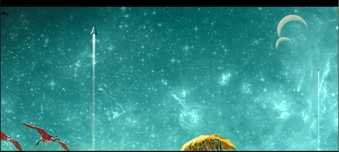
图2 源图像

图3 8*8
第三步,对图片进行灰度化
灰度化就很简单了,最简单的做法就是求R,G,B的平均值
这里采用了常见的灰度化公式,这是整数算法,减少了浮点计算,在一定程度上提高了速度
Gray = (R*299 + G*587 + B*114 + 500) / 1000
灰度化代码
# put bmp graying def graying(self): new_bits = [b‘‘] * self.width * self.height * self.bit_count for i in range(0, self.height): for j in range(0, self.width): s_index = i * self.width_step + j * self.bit_count target_index = i * self.width_step + j * self.bit_count r = int.from_bytes(self.bits[s_index + 2], ‘little‘) g = int.from_bytes(self.bits[s_index + 1], ‘little‘) b = int.from_bytes(self.bits[s_index], ‘little‘) gray = (r * 30 + g * 59 + b * 11) / 100 new_bits[target_index] = int(gray).to_bytes(1, ‘little‘) new_bits[target_index + 1] = int(gray).to_bytes(1, ‘little‘) new_bits[target_index + 2] = int(gray).to_bytes(1, ‘little‘) self.bits = new_bits
实现效果:
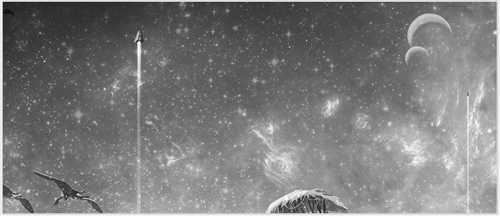
图4 灰度化效果
第四步,对图片进行旋转
参考博文:
第一篇博文完整分析了图片旋转的公式原理,说的非常清晰,有兴趣可以手写一遍,挺简单,而且清晰。
原理我就不说了,不在这献丑了~
来说说我遇到的问题
1、我不清楚如何要获得我们旋转后的宽和高,参考博文2中给出了公式,当时我并没有看懂,后面找到了一张图后,就明白了,这这里分享出这张图。
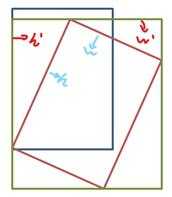
图5 旋转原理图
说明: w为原宽,h为原高 h‘为旋转后的高 w‘为旋转后的宽
从而可以看出
h‘ = h * cos + w * sin
w‘ = h * sin + w * cos
从而我们就得到了旋转后的宽和高,旋转后的图片所在的矩形区域是图中绿色部分。
我使用了上述博文中提到的反映射方法和最近邻插值法
代码如下:
def rotate(self): self.__rotate(90) """ reference: http://blog.csdn.net/liyuan02/article/details/6750828 attention: in the loop, the x in real bmp is represent y, the y same too. """ def __rotate(self, degree): cos_degree = math.cos(math.radians(degree)) sin_degree = math.sin(math.radians(degree)) h = math.ceil(self.height * cos_degree + self.width * sin_degree) w = math.ceil(self.height * sin_degree + self.width * cos_degree) h = abs(h) w = abs(w) if w % 4 != 0: w -= w % 4 dx = -0.5 * w * cos_degree - 0.5 * h * sin_degree + 0.5 * self.width dy = 0.5 * w * sin_degree - 0.5 * h * cos_degree + 0.5 * self.height new_bits = [b‘‘] * w * h * 3 for x in range(0, h): for y in range(0, w): x0 = y * cos_degree + x * sin_degree + dx y0 = -y * sin_degree + x * cos_degree + dy src_index = round(y0) * self.width_step + round(x0) * self.bit_count dst_index = x * w * self.bit_count + y * self.bit_count if len(self.bits) - self.bit_count > src_index >= 0: new_bits[dst_index + 2] = self.bits[src_index + 2] new_bits[dst_index + 1] = self.bits[src_index + 1] new_bits[dst_index] = self.bits[src_index] else: new_bits[dst_index + 2] = i_to_bytes(255, 1) new_bits[dst_index + 1] = i_to_bytes(255, 1) new_bits[dst_index] = i_to_bytes(255, 1) self.bits = new_bits self.biWidth = i_to_bytes(w, 4) self.biHeight = i_to_bytes(h, 4)
要注意的问题是:
在for循环中的 x 是实际图像的 高
在for循环中的 y是实际图像中的宽
之前没注意该问题,直接套公式,结果一直有问题。
我目前只是初版,选择90°效果还行,其他度数的话,代码可能要进行改动。
我这里是默认逆时针旋转90°
效果如下:
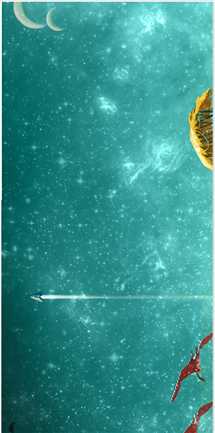
图6 逆时针旋转90°
到此,预期实现功能结束。
因为我所在地区比较偏远,github访问不便,等会上传成功后,给出源码链接
github:
https://github.com/zyp461476492/SimpleBmpResolver.git
标签:处理 eset back else app pen offset bit 识别
原文地址:http://www.cnblogs.com/zyp4614/p/6917943.html